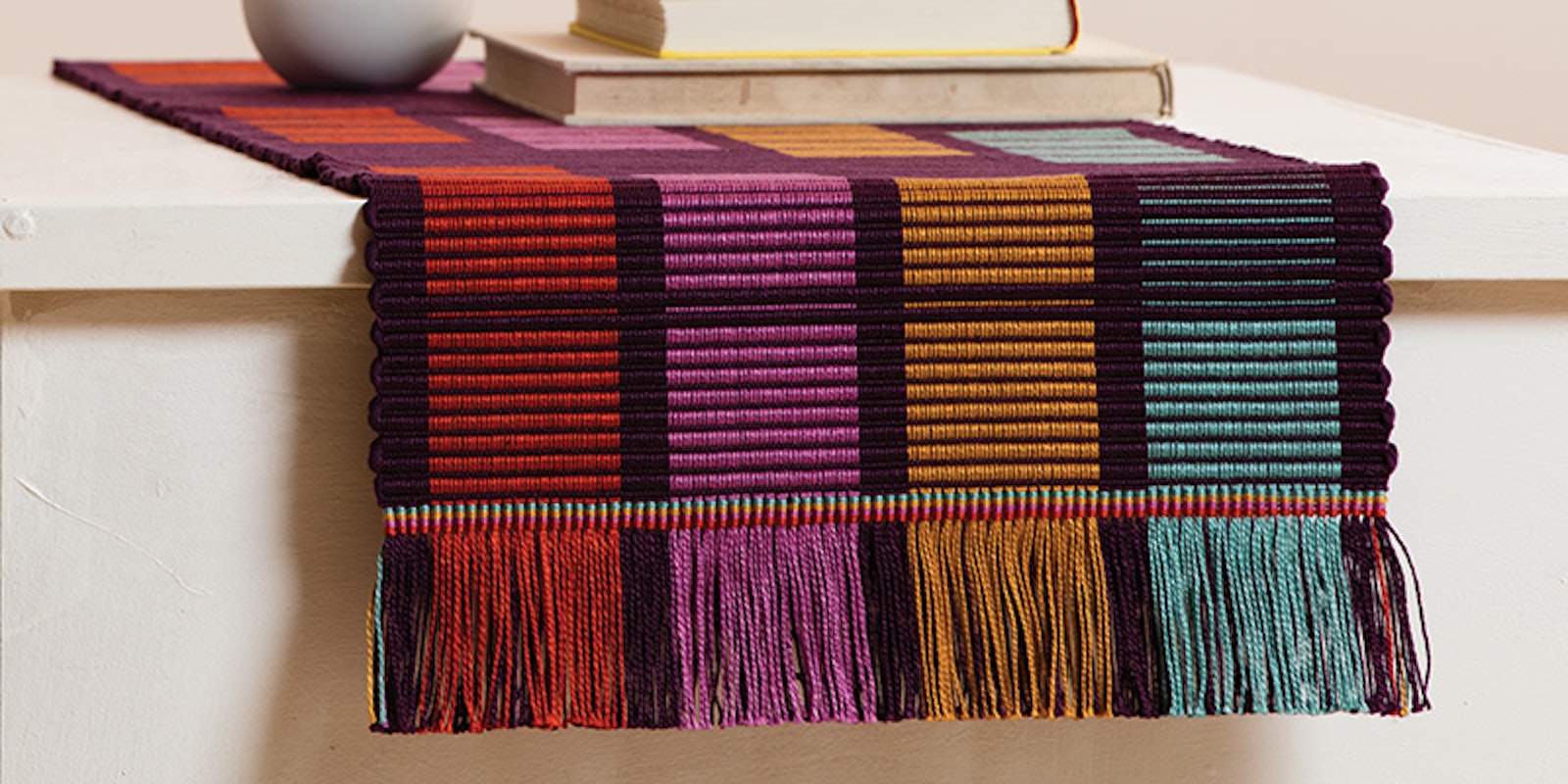If you have been weaving for a while, you know that finishing a handwoven project well is as important as the design and actual weaving. Applying the same standards to the finishing as you did to everything else about a project sometimes takes more time than the weaving.
For a professional look on scarves and shawls, I twist the fringe. For table linens with fringe, I hemstitch on the loom and then trim the fringe. I handwash fringed projects, but particularly when the fringe isn't twisted because the yarn will deteriorate with vigorous washing. I alternate between hand-hemming handwoven items such as towels and hemming them on the sewing machine, although lately I am leaning more towards the hand-hemmed look.
Color Gradation Towels by Susan E. Horton, Handwoven March/April 2017. Hemmed by machine but maybe hemmed by hand would have been better? Photo Credit: George Boe
A lot of people like fringe on handwoven rugs, but in my house, fringe either gets caught in the vacuum or chewed on by pets, so I finish the ends with hems or twine the warp and then tuck the ends back into the rug.
Over the years, I've made some mistakes and hopefully learned some lessons about weaving and finishing. Here are a few gems:
- Cut into the body of a towel when I was trying to trim the hem. This taught me never to work with scissors on my lap.
- Got involved in a conversation with a friend while fulling 5 yards of wool fabric. I ended up with thick, lumpy felt. I felt and full on my own now, without distractions.
- Pulled 6 warp threads out of a handwoven blanket and replaced them with different colored threads by needle weaving. 80" each! It was worth it. Ok, this was really a design mistake but it does show how final touches can make or break a piece.
- Got so excited when finishing a rag rug that I forgot to weave a header to turn under and hem. I had to twist the fringe right at the first pick of rags, and then pick out the header on the other end to make them match.
- Wove a beautiful shawl using unknown fibers, washed it and watched it basically deteriorate into a squiggly mess. I could have avoided this whole problem by washing the unknown fibers beforehand.
Many weavers just knot the ends up close to the weaving and trim. If that is your method, I encourage you to try different finishing techniques. The correct finishing technique can make an ordinary weaving into extraordinary, and a wonderful weaving into amazing.
Weave well, Susan


